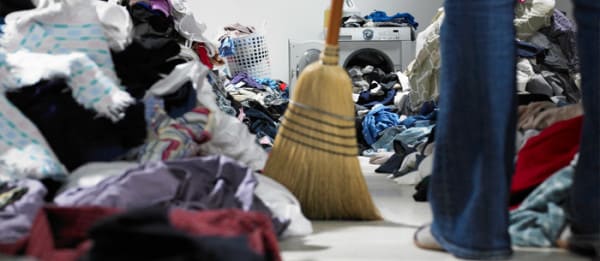No one intentionally decides to become a hoarder. Hoarding has only recently become officially recognised as a mental disorder. Currently it is defined as ‘excessively acquiring items that appear of little or no value and not being able to throw them away, resulting in unmanageable amounts of clutter.’
Despite these challenges, you can greatly reduce hoarding behaviour using some of the self-help steps identified below.
If you, or someone you love, is dealing with hoarding behavioural problems, you should consider consulting your medical professional or provincial mental health services for help and advice.
Managing a Current Hoard
Desire change
The hoarder has to have the will to change, first and foremost. While not all hoarding is preceded by emotional trauma, many hoarders begin manifesting the behaviour after some sort of life crisis. Identify the source of the pain, if the hoarding is a symptom of something bigger. Until you get to the root of why the person is hoarding, it’s difficult to change.
Set realistic goals
Correcting hoarding behaviour will be emotionally and physically exhausting. This is hard work, so expect to get tired easily and go at your own pace. You may not be able to simply go through everything in one afternoon. A hoarder’s home becomes cluttered and unmanageable over time, so it only makes sense that it will take time to get it cleaned and organised. Taking on challenges in small bites helps.
Start with the easiest room first. Make an inventory and begin with the items you can most easily make a decision about, but schedule time to clean up in a very specific way so you have it on the calendar.
Create a plan
Cleaning up can be overwhelming and confrontational. Group like items together, before making decisions about what stays and what goes. Ask questions such as, ‘when is the last time I used this?’ and ‘what’s the worst thing that would happen if I let this go?’
Stick to the ‘three-second rule’
Give yourself three seconds to decide what to do with something by placing it in one of four categories: keep, throw away, donate or recycle. Any items leaving the home should be taken out right away. Don’t wait for recycling day; bring the items to the recycling center and leave them there. The same goes for charity shop donations or rubbish. Make a 24-hour plan to get rid of all of the stuff you won’t be keeping.
Avoiding Future Hoarding
Rules for buying
Rules that prevent hoarding behaviour from continuing are key. If you bring an item into the home, such as a pair of shoes, you must also eliminate one pair of shoes, for example. Also, identify how an item will be used before you buy it – clutter forms when items do not have a home.
Avoid freebies
The lure of buy one, get one free items is a common trap for hoarders. Free gifts with purchase and BOGO deals might seem like great bargains, but unused, extra stuff can quickly turn into clutter that overtakes your home beyond its expiration date.
Forget DIY
Procrastination is a trademark of hoarding. Don’t buy things that need to be fixed as this is representative of a hoarder’s cognitive distortion. Broken things tend to stay broken, creating additional chaos and clutter.
Stay engaged
Again, hoarding doesn’t go away overnight. It’s a constant battle. And the person suffering from it needs help. Hoarding is not a simple problem, nor is its fix. Once the desire is there to change, simple steps and a clear organizational plan can go a long way toward turning an unliveable home into a comfortable and beautiful living environment.
